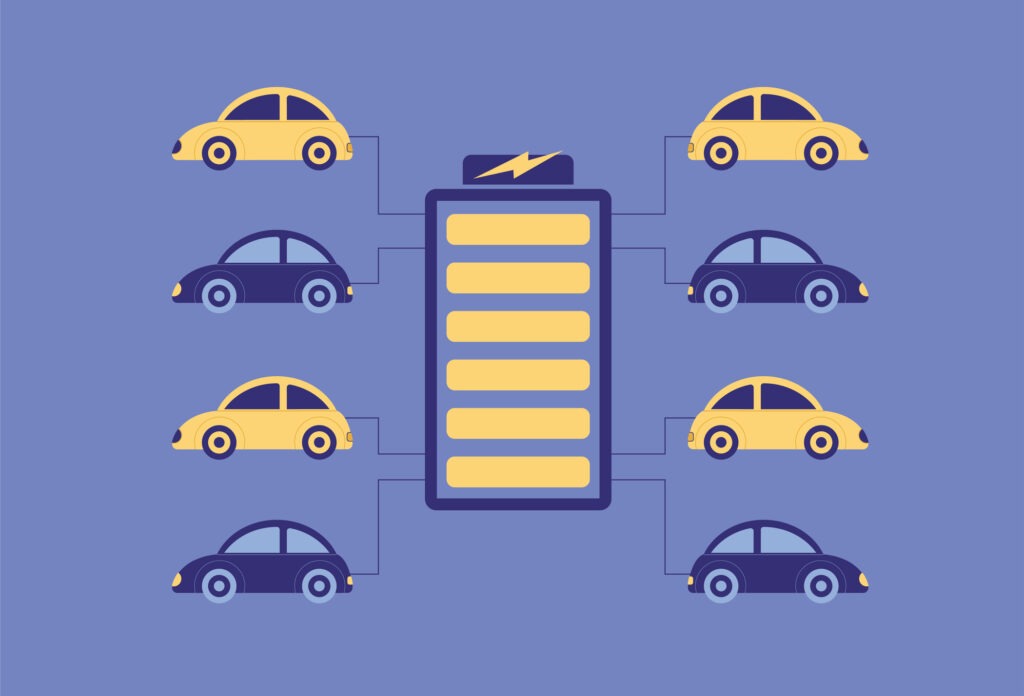Is a slowdown for key European new-car markets on the horizon?
10 October 2023

Key European markets reported growth in registration figures during September, but there are signs that a slowdown is occurring, as order backlogs clear from the 2022 supply-chain crisis.
France, Spain, and Italy all recorded new-car registration rises last month, but a deeper dive into the figures reveals some worrying trends. While these markets continue to recover from recent trials, year-on-year comparisons no longer appear so favourable.
Registration figures are now being compared to a period when vehicle deliveries resumed at apace following months of bottlenecks on production lines. This has slowed the impressive growth of recent months.
Across the three markets, Italy saw the greatest year-on-year gain, with registrations up 22.7%. France was next with an increase of 10.7%, while Spain saw growth of 2.3% last month.
However, with each market managing to increase registrations, there is some hope that continued growth is possible. This is despite the distorted numbers from 2022 and the ending of delivery delays, with the figures still some way off the levels seen prior to the outbreak of COVID-19.
France continues to improve
The French new-car market increased 10.7% last month, meaning 156,304 cars took to the country’s roads, according to data from the CCFA. While not as strong as August’s 24.3% rise, the double-digit growth highlights that the country is still pushing forward with its recovery. Compared to September 2019, registrations are down 9.9%
Further figures released by the AAA show that the battery-electric vehicle (BEV) market in France continued to grow in September. 30,172 all-electric units accounted for 19.3% of the total market in the country. The private sector led the way, accounting for 21% of purchases, ahead of fleets with 12%. Yet BEVs face a coming storm.
The country’s ecological bonus, which provides financial assistance for the purchase of a BEV in the private sector, is set to change. Revisions to the vehicle eco-scoring structure and purchase assistance were recently published in the country’s Official Journal. These texts do not yet contain any information on pricing, with the AAA expecting the current rates to remain in play for the time being. This includes €5,000 for those purchasing a vehicle priced at or below €47,000, rising to €7,000 for households with the lowest incomes or dropping to €3,000 for legal entities.
Revisions are expected to come into force from mid-December 2023, before the country’s finance bill is finalised. The remodelling of this bill may alter the scores at which a BEV is eligible for funding, depending on factors including its carbon footprint and life cycle. This means an increased number of vehicles may not meet the incentive requirements.
Registrations of plug-in hybrids (PHEVs) grew 41% to 9,533 units in September, while hybrids (HEVs) totalled 27,155 deliveries. Both petrol and diesel powertrains struggled, however. With 52,946 units, petrol increased its figures by 1% compared to the same month last year and accounted for just over a third of total deliveries. Diesel continued its downfall, with a decline of 35% to 13,268 registrations, and a share of just 8.5%.
In the year to date, BEV registrations increased by 45.3%, while PHEVs were up 31.5%, and HEVs improved by 27.6%. Petrol has seen slower gains, but still performed well with a 15.2% increase, and diesel was down by 28.8% in the first nine months of the year. Overall, the French market is up 15.9% compared to the same period in 2022.
According to the latest forecast data from EV-Volumes.com (part of Autovista Group), France performed better than expected last month. Therefore, the 2023 forecast has been revised upwards, with new-car registrations expected to end the year up 13.9% on 2022. However, as this latest forecast suggests the clearing of backlogs will be complete by the end of this year, the forecast has been revised downwards slightly for 2024, with just a 2.7% increase.
Slow growth in Spain
With just a 2.3% rise in registrations, equating to 68,803 units, the country’s automotive authority ANFAC was not pleased with the results from last month. Although this is an increase on last year, a time when vehicle deliveries picked up, the body believes the figures should have been higher, and that underlying challenges are impacting the market. Compared to 2019, the month’s registrations were down 15.8%.
‘September closed with a slight increase in passenger car sales despite having one less business day than in the same month of 2022,’ commented Félix García, director of communication and marketing at ANFAC. ‘All months of the year have closed positively, but it is no less true that political uncertainty and a high-interest rate scenario have had a dent in the volume. A market with close to 70,000 units for a month like September is not a great figure.
‘In any case, the year continues to be positive with an increase of 18.5%. With these data and rising inflation persisting, we are not optimistic about reaching the 950,000 units planned for the end of the year,’ García added.
In September, internal-combustion engines struggled. Petrol saw its registrations increase by just 2.9%, holding a 38.2% market share. Diesel declined again, down 29.5%, although its market share remained in double figures, at 12.5%.
BEV volumes in Spain are the smallest of the major European markets, as the country continues to build the infrastructure needed to make them a mainstream option for consumers. The 3,724 registrations in September equated to a 13.3% increase year on year, while PHEVs improved by 18% to 4,927 units. Combined, electric vehicles (EVs) secured a share of 12.6%, surpassing diesel, but still some way behind petrol and HEVs, which held 34.3% of the market.
‘The EV market is advancing in Spain. Even so, our market has a share of 12% of the total market, a figure that is far from the pace in Europe, which exceeds 20%, and in Portugal, which reached a 28% share and continues to grow,’ added José López-Tafall, general director of ANFAC. ‘We must remind all those who want to switch to electrified mobility that, today, Spain is one of the countries that provides the most aid for the purchase of a 100% electric vehicle: up to €10,000 if we add the MOVES III plan and the 15% deduction up to 3,000 for their purchase in personal income tax.’
With the country’s incentive scheme set to end on 31 December, and no scheduled replacement, López-Tafall indicated the impact this could have on the ambitions of the market to grow the EV share further. ‘Not having aid for the purchase of zero-emission vehicles or the installation of charging points would represent a brake on electrification,’ he continued. ‘A stoppage that would further deepen the distance between the locomotive that is Europe and the caboose in which we are, both in penetration of electrified vehicles and charging infrastructure.’
EV-Volumes forecasts that Spain will reach 924,361 registrations by the end of 2023, an improvement of 13.6% on last year. Growth is expected to slow to 3.9% in 2024, and 3.5% in 2025, with clearing backlogs playing their part in a slight market slowdown.
BEVs struggle in Italy
Italy’s headline figure of 22.7% growth, as reported by ANFIA, is impressive, especially compared to last year’s improvement. However, the number hides a slightly worrying decline for BEVs, which fell by 2.3%.
The Italian BEV market has not had as stable a growth as others in Europe. Registrations declined in January, while in June figures increased by just one unit. Yet other months have seen figures nearly double compared to last year. This means that BEVs only took 3.6% of the country’s market in September, down 1% on last year. But in the year-to-date figures, all-electric models still held a share of 3.9%, up on the first nine months of 2022 by 0.2% thanks to growth of 27.6%.
EV-Volumes forecasts that the Italian BEV market will end the year with a market share of 4.1%, with growth to come in the remaining three months of 2023. When it comes to the overall market, the forecast has been revised slightly upwards, due to a better-than-expected performance in September, with the country projected to achieve growth of 16.3%, before improving just 2.2% in 2024, and 2.3% in 2025, as backlog deliveries slow further.
Italy is, however, embracing electrification in other forms. HEVs saw registrations rise 34.8% with 53,711 cars taking to the roads, while PHEVs grew by 37.1% in the month with 5,474 new cars. HEVs are the dominant powertrain in Italy, with a market share of 39.4%, well ahead of petrol, which held 29.7% last month thanks to deliveries rising 32.2%. The performance of HEVs is not an anomaly, as their year-to-date market share is also high above petrol, 35.7% compared to 28.5%.
BEVs were not the only powertrain to see a decline last month, with diesel once again decreasing in a major European market, down by 2.5% with 20,656 registrations. The technology held a 15.2% market share, the most of the three major markets, although this was down by 3.9% compared to last year.
In September, Italian registrations were down just 4.2% compared to 2019. Across the first nine months of the year, Italy was up 20.6% against the same period in 2022, with 1,176,003 passenger cars registered. This includes an 11.3% increase in diesel registrations, suggesting the fuel type remains popular in the country.



